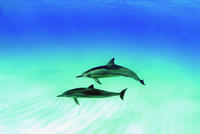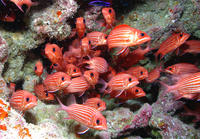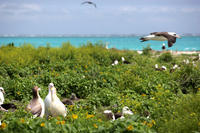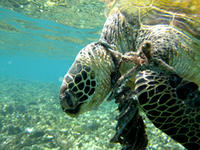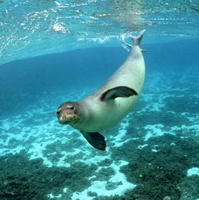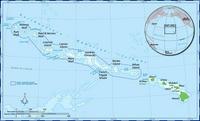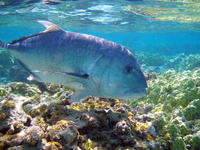You are in: North America -> United States of America -> Papahānaumokuākea, and traditional search or Image Gallery will yield results of this site only
Papahānaumokuākea
| Site number: | 1326 |
|
| Type of site: | Mixed | |
| Date: | - | |
| Date of Inscription: | 2010 | |
| Location: | North America, USA, Hawaii, Hawaiian Archipelago | |
Up to 75 images are shown here. Click on each for more details or on Image Gallery for more images.
| Description: | Papahānaumokuākea is one of the largest marine protected areas (MPAs) in the world. This 1931 km site is located northwest of the Hawaiian Archipelago and consists of a vast and isolated linear cluster of small, low lying islands and atolls and their surrounding ocean. Much of it is made up of pelagic and deepwater habitats, and includes seamounts, submerged banks, coral reefs and lagoons. For native Hawaiians, Papahānaumokuākea is an ancestral environment with deep cosmological and traditional significance, embodying the Hawaiian concept of connection between people and the natural world. They believe that life originated here and that this is where spirits return after death. Nihoa and Makumanamana Islands contain archeological remains of pre-European settlements. --WHMNet paraphrase from the description at WHC Site, where additional information is available. | |
| The Papahānaumokuākea Marine National Monument (aka Papahānaumokuākea) is a World Heritage listed, U.S. National Monument encompassing 140,000 square miles (360,000 km2) of ocean waters, including ten islands and atolls of the Northwestern Hawaiian Islands, internationally recognized for both its cultural and natural values as follows: "The area has deep cosmological and traditional significance for living Native Hawaiian culture, as an ancestral environment, as an embodiment of the Hawaiian concept of kinship between people and the natural world, and as the place where it is believed that life originates and to where the spirits return after death. On two of the islands, Nihoa and Makumanamana, there are archaeological remains relating to pre-European settlement and use. Much of the monument is made up of pelagic and deepwater habitats, with notable features such as seamounts and submerged banks, extensive coral reefs and lagoons. It is one of the largest marine protected areas (MPAs) in the world." The area was proclaimed the Northwestern Hawaiian Islands Marine National Monument by U.S. President George W. Bush on June 15, 2006; it was renamed Papahānaumokuākea in 2007, and inscribed on the World Heritage list as Papahānaumokuākea on 30 July 2010, at the 34th Session of the World Heritage Committee, Brasilia. The area is managed in partnership with the Department of Commerce, the Department of the Interior, and the State of Hawaii. The name for the area was inspired by the names of the Hawaiian creator goddess Papahanaumoku and her husband Wakea. The national monument was inscribed on the World Heritage List in July 2010 as simply "Papahānaumokuākea". On January 30, 2008, the U.S. Department of Interior added Papahānaumokuākea Marine National Monument to a tentative list of 14 proposed sites for consideration on the UNESCO World Heritage List.[35] The Federal Interagency Panel for World Heritage officially accepted the recommendation in November 2008. As a mixed site with natural and cultural resources, the International Union for the Conservation of Nature (IUCN) commented on the natural features of the monument, and the International Council on Monuments and Sites (ICOMOS) assessed its cultural aspects. --Wikipedia. Text is available under the Creative Commons Attribution-ShareAlike License. | ||
| Source: | http://whc.unesco.org/en/list/1326 | |
| Reference: | 1. UNESCO World Heritage Center (http://whc.unesco.org/en/list/1326). 2. Wikipedia. | |









